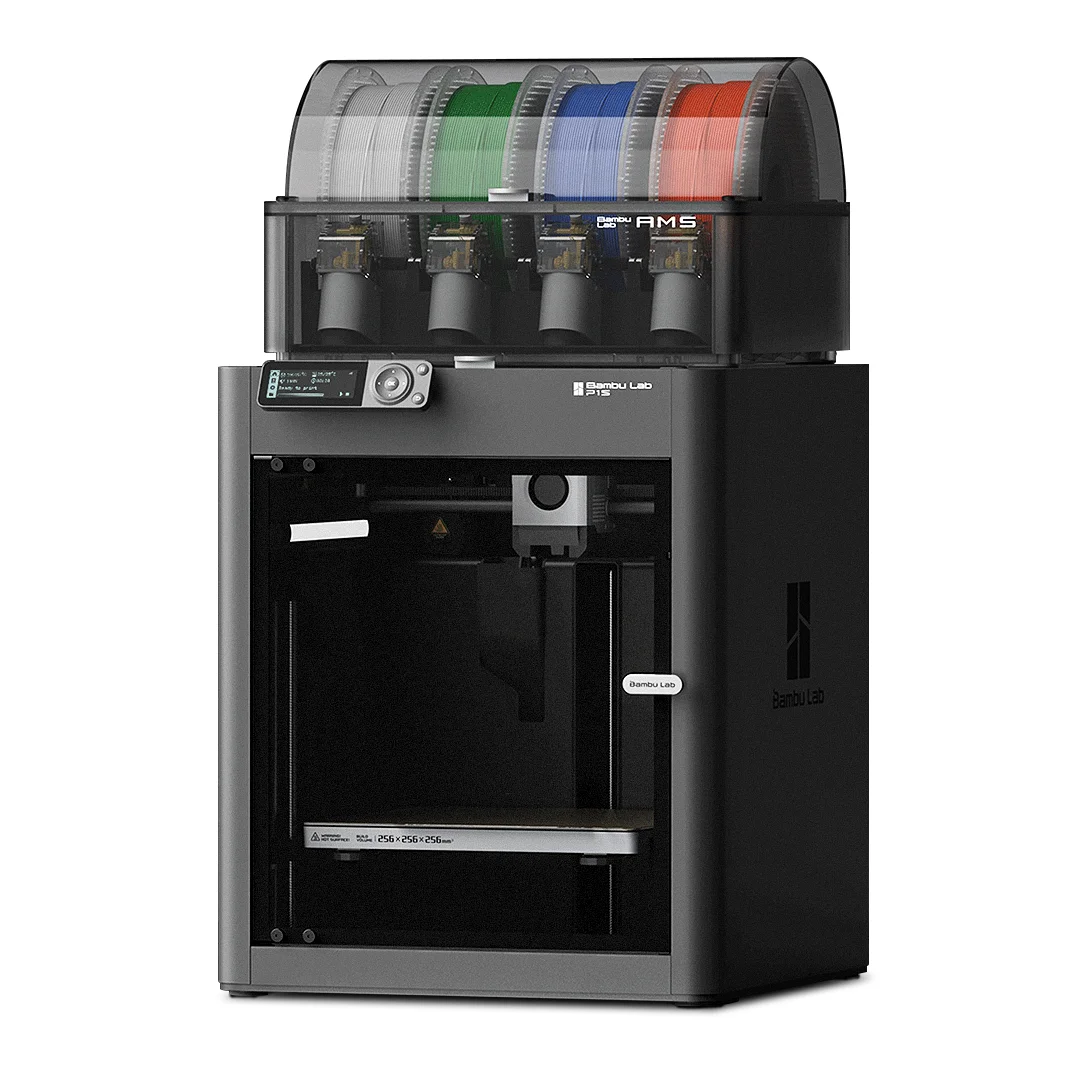Compare KP3S PRO V2 vs P1S
Comparison between the best 3D printers
Choose the best 3D printer at the best price. The cheapest 3D printers are here.
Buy a 3D printer here with 3D Fila.
 |
 |
|
| Model | KP3S PRO V2 |
P1S[BUY P1S] |
| Printing Material | Filament | Filament |
| Buy Filament for Kingroon KP3S PRO V2 | Buy Filament forBambu Lab P1S | |
| Estimated price | $229,00 | $949,00 |
| Manufacturer | Kingroon | Bambu Lab |
| Release Year | 2024 | 2023 |
| Print Volume [mm] | 220x220x250 | 256x256x256 |
| Printer Size [mm] | 420x400x450 | 389x389x458 |
| Weight [kg] | 12,6 | 12,95 |
| Power Loss Recovery | NO | YES |
| Enclosed printer | NO | YES |
| Bed Leveling | Automatic | Automatic |
| Filament End Sensor | NO | YES |
| Bed type | Heated | Heated |
| Power supply system | Direct Drive | Direct Drive |
| Standard nozzle | 0,4 | 0,4 |
| Maximum Nozzle Temperature [°C] | 260 | 300 |
| Maximum Bed Temperature [°C] | 100 | 100 |
| Maximum printing speed [mm/s] | 350 | 500 |
| Filament holder | YES | YES |
| Camera for supervision | NO | NO |
| Recommended filaments | PLA, PETG, TPU | PLA, PETG, TPU, PVA, PA, PA-CF, Nylon, PC |
| Recommended slicers | Cura, Orca Slicer | Bambu Studio, Super Slicer, Cura, Prusa Slicer, Orca |
| Maximum Resolution [mm] | 0,01 | 0,1 |
| Processor | Quad ARM A7 1.2 GHz | |
| Display | LCD Mono | Touchscreen 5'' |
| Power Supply | 300 W | 350 W |
| Connectivity | USB-C / MicroSD / Ethernet | Wifi, Bambu bus, Cartão SD |
| Operating systems | Windows, Mac, Linux | Windows, Linux, Macbook |
| Date of registration in the system | 2025-03-18 | 2024-04-11 |
| Release date | 2024 | 2023 |
| Extra features | The Kingroon KP3S Pro V2 is a high-speed FDM 3D printer with Klipper firmware, ensuring fast and precise prints. It features linear rails on all axes, a Direct Drive extruder with a 9.5:1 gear ratio, and an efficient ceramic heater. It includes an inductive sensor for automatic bed leveling, a PEI magnetic bed, a built-in accelerometer for vibration calibration, and Wi-Fi, Ethernet, and USB connectivity for remote control. | The Bambu Lab P1S stands out for its out-of-the-box practicality, eliminating the need for manual adjustments with automatic calibrations such as bed leveling and vibration compensation. It features multicolor printing capability through the AMS system, allowing up to 16 colors when connecting four AMS units. With an advanced control algorithm, the P1S offers fast printing speeds without sacrificing quality. Equipped with modern features such as filament end sensor, semi-automatic belt tension, direct extruder, welded frame and all-metal hotend, along with a fully enclosed chamber, the P1S promotes a superior printing experience, supporting a wide range of materials. |
| Support for multiple colors and materials (AMS and CFS) | NO | YES |
Notes * |
||
| Cost-benefit | 7 / 10 | 7 / 10 |
| Hardware | 0.9 / 10 | 6.4 / 10 |
| Tela | . | . |
| Print volume | 3 / 10 | 4 / 10 |
| Performance | 3 / 10 | 4 / 10 |
| [BUY P1S] |
Conclusion |
| In comparing the Kingroon KP3S PRO V2 and the Bambu Lab P1S 3D printers, both models offer unique advantages that cater to different user needs and budgets. The KP3S PRO V2 is an economical choice, aimed at novice users or hobbyists looking for a reliable machine with basic features. It provides a good balance of print quality and speed while keeping costs low, making it a strong contender for those just starting in 3D printing. On the other hand, the P1S is designed for more advanced users or professionals who require additional features such as multi-material printing capabilities, an enclosed build chamber, and higher maximum printing speeds. It excels in versatility, supporting a broader range of filament types, and incorporates more sophisticated technology such as automatic calibration and a touchscreen interface for ease of use. While the KP3S PRO V2 is a strong entry-level option with a favorable cost-benefit ratio, the Bambu Lab P1S justifies its higher price with enhanced performance, advanced features, and greater material compatibility. Ultimately, the choice between the two will depend on the user's budget, printing needs, and experience level, making both printers valuable options in today’s 3D printing landscape. |

